The way electrons move in a wire:
When a potential difference is applied to a wire, an electric field is created across the wire, and electrons throughout the wire start moving due to this field. Together with the field the electron repels the nearest electron in the wire out of the way, this electron in turn repels another, and the effect ripples down the wire until an electron at the far end of the wire is ejected into the more positive target. An individual electron takes a long time to migrate from one end of the wire to the other, but the time between an electron entering one end of the wire and causing an equivalent electron to be ejected from the other end is extremely fast.
Three Passive Device
Resistor:
- The value of resistance depends on the resistor’s length, cross-sectional area and resistivity of the material from which it is made.
- V = I R
- Unit: ohms / Ω
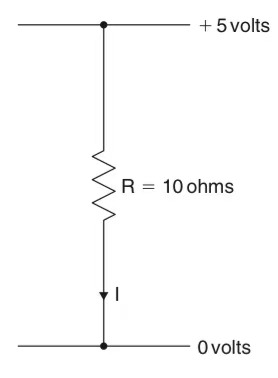
Capacitor:
- formed from two metal plates separated by a layer of insulating material
- The resulting capacitance depends on the surface area of the plates, the size of the gap between them and the non-conducting (dielectric) material used to fill the gap.
RC Circuit:
- The maximum current occurs at time T=0 when there is the greatest potential difference.
- The minimum current is 0 and occurs when the capacitor is fully charged.
- The time constant τ in seconds equals R in ohms times C in farads, and in τ seconds the capacitor will charge 67% of the remaining distance to the maximum voltage.
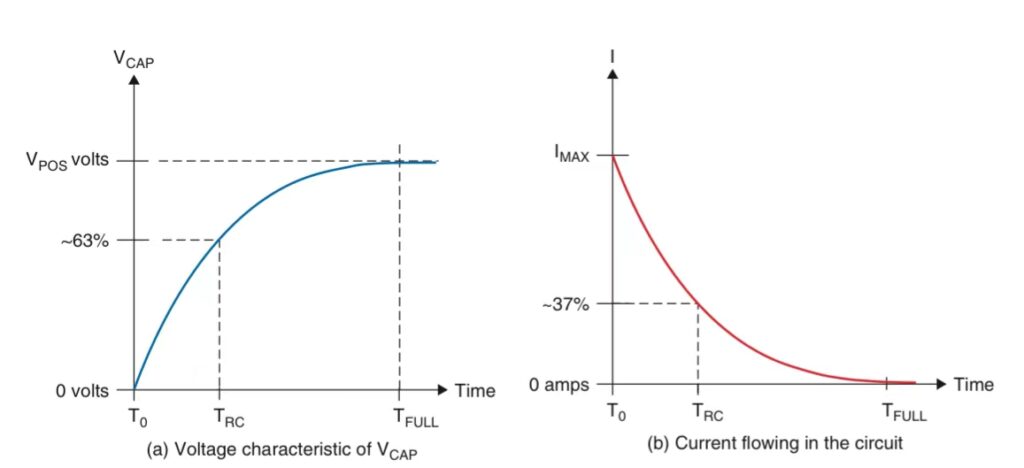
Water Tank Analogy: Think of a capacitor as a water tank that we want to fill with water (charge). The resistor in the circuit can be thought of as a hose through which water flows into the tank. The resistance of the hose is like its width or any obstacles inside it that slow down the water flow. The applied voltage is like the water pressure pushing water through the hose into the tank. When you first turn on the water (connect the voltage source), water starts flowing quickly into the empty tank. As the tank starts to fill up, the water flow slows down because the pressure inside the tank starts to balance out the pressure pushing the water in. This is like the capacitor voltage increasing and the charging current decreasing over time. Eventually, the tank gets almost completely full, and the water flow nearly stops because the pressures balance out. This is like the capacitor reaching its final voltage.
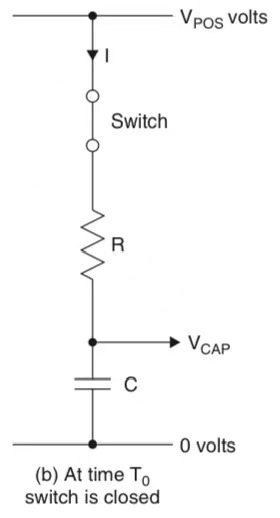
Inductor:
- Inductance is a property of the inductor that determines how much magnetic field is produced for a given electric current. It is measured in henrys (H).
- The inductor has a natural resonant frequency depending on the diameter of the rod, the material used to form the rod and the number of coils.
- When a current flows through the inductor, it creates a magnetic field around the coil of the inductor. The strength of this magnetic field is proportional to the current flowing through the inductor.
- Inductors resist changes in the current flowing through them. When the current through the inductor changes, the magnetic field changes, which induces a voltage (according to Faraday’s Law of Electromagnetic Induction) that opposes the change in current. This is described by Lenz’s Law.
- The inductor acts like a wire when it reaches a steady state
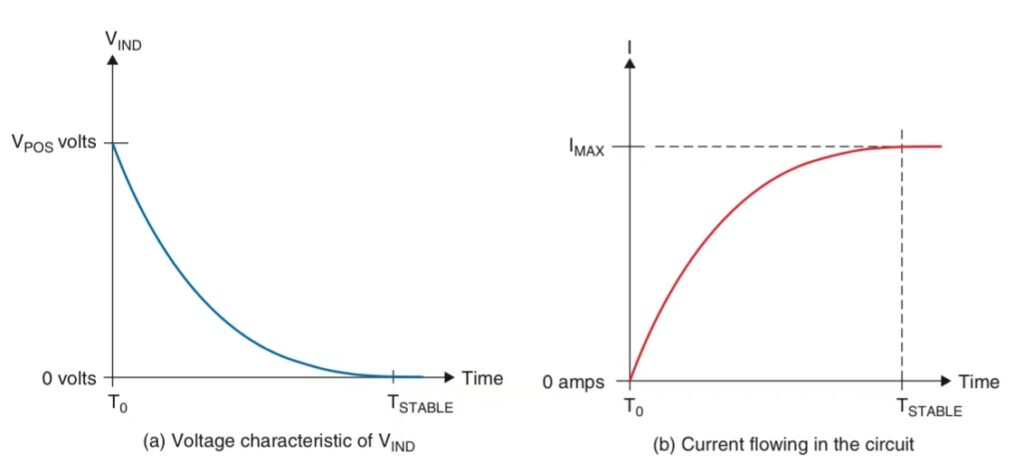
Water Flywheel Analogy: Imagine a system involving water flowing through pipes and a heavy flywheel. The flow of water through pipes represents the flow of electric current through a circuit. A flywheel is a heavy wheel that takes time to get up to speed when water flow (current) begins, and similarly, it takes time to slow down when the water flow stops. When you first turn on the water (apply voltage), the water starts to flow, but the flywheel doesn’t immediately start spinning at full speed. It takes time to accelerate because of its inertia. This is similar to an inductor, which resists sudden changes in current. The inductor initially resists the increase in current, causing a slower build-up. Once the water is flowing steadily, the flywheel spins at a constant speed. Similarly, when the current through an inductor reaches a steady state, the magnetic field is stable, and the inductor allows the current to flow freely without opposition. If you suddenly turn off the water, the flywheel doesn’t stop immediately. It keeps spinning and pushing water through the pipes for a while. This is like an inductor, which resists a sudden drop in current. The flywheel stores kinetic energy while it’s spinning. Similarly, an inductor stores energy in its magnetic field.
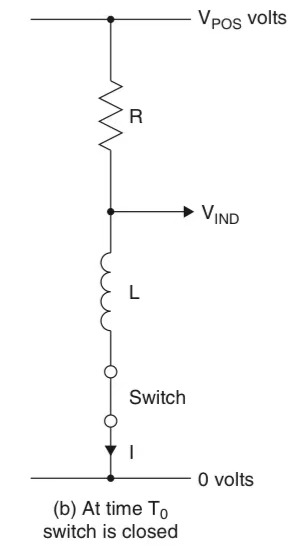
Memristors
- a resistor with memory
- a direct current applied in the component could adjust its apparent resistance which could subsequently be read or observed using alternating current.
Impedance and Reactance
- Alternating current refers to an electrical current whose magnitude and direction vary cyclically.
- When an AC signal in the form of a sine wave is being fed into a simple electrical circuit that contains capacitors or capacitive effects and or inductors or inductive effects, the voltage and current values across these elements will be out of phase. The voltage across a capacitor will lag the current passing through that capacitor while the voltage across an inductor will lead to the current passing through that inductor.
- Impedance describes a measure of opposition to a sinusoidal alternating current. Impedance extends the concept of resistance to AC circuits.
- Impedance is a complex quantity, Z = R + iX, the real part R of the impedance is resistance and the imaginary part X is the reactance.